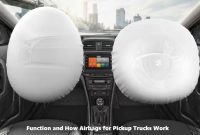Driving safety is a top priority in the automotive industry. Continuous innovation aims to minimize the risk of accidents and protect drivers and passengers. Two main approaches to car safety technology are active and passive safety. Active safety focuses on preventing accidents through features like Anti-lock Braking Systems (ABS) and Electronic Stability Control (ESC). Meanwhile, passive safety works to reduce the impact of injuries when accidents are unavoidable. This article will discuss passive safety technology in cars and how Driver Monitoring Systems (DMS) play a role in maximizing its effectiveness.

Driver Monitoring Systems (DMS): The Ever-Watchful Eye
Driver Monitoring Systems (DMS) are technologies that use sensors and cameras to monitor the driver’s condition in real-time. These systems can detect signs of fatigue, drowsiness, or distraction in the driver. The information collected by DMS can be used for various purposes, including:
- Early Warning: DMS can provide warnings to the driver if signs of fatigue or distraction are detected. These warnings can be audible, haptic (vibration), or visual displays on the dashboard.
- Safety Feature Activation: In some cases, DMS can be integrated with active and passive safety features. For example, if the DMS detects a drowsy driver and the car begins to drift out of its lane, the system can automatically activate Lane Keeping Assist or even initiate automatic braking.
The Role of Driver Monitoring Systems in Enhancing Passive Safety Technology Effectiveness
DMS plays a crucial role in maximizing the effectiveness of passive safety technology. Here are some examples:
- Airbag Deployment Optimization: DMS can help determine the optimal timing for airbag deployment. By monitoring the driver’s condition before a crash, the system can ensure the airbags deploy at the most effective moment to protect the driver.
- Seat Belt Integration: Some advanced systems can automatically tighten seat belts if the DMS detects a potential hazard, even before a collision occurs. This helps position the driver more effectively for optimal protection from the airbags and the car’s body structure.
- Reducing Single-Vehicle Accidents: By detecting fatigue and distraction, DMS helps prevent single-vehicle accidents often caused by drowsy or inattentive driving. By preventing accidents, DMS indirectly maximizes the effectiveness of passive safety technology by preventing situations where these features need to be activated.
Sourced from Intellitrac Indonesia‘s Facebook account, the use of the Driver Monitoring System provides significant changes in long-distance travel. Previously, drowsiness often attacked in the middle of the trip, especially when driving alone at night. However, with DMS, the system will provide warnings in the form of sounds and vibrations on the steering wheel when signs of fatigue are detect, such as eyes that blink frequently or heads that begin to droope. This warning is very helpful to stay focused and prevent potential accidents due to microsleep. This system effectively provides an opportunity to rest for a while before continuing the journey.
Passive safety technology is an essential layer of protection for drivers and passengers in the event of an accident. With the advent of Driver Monitoring Systems, the effectiveness of these technologies can be significantly enhance.
DMS not only provides early warnings to drivers but can also integrate with other safety features to provide more comprehensive protection. The development and implementation of Driver Monitoring Systems are important steps forward in creating a safer driving environment. /tari



